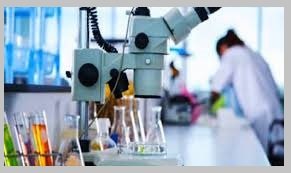Introduction to Science Laboratory Technology
Science laboratory technology is at the core of innovation in numerous fields, from healthcare and pharmaceuticals to food production and environmental research. This technology focuses on tools and techniques for scientific experiments, analysis, and data collection, enabling scientists and researchers to make breakthroughs that shape our world. As industries become more technologically driven, the importance of science laboratory technology grows exponentially.
What is Science Laboratory Technology?
Science laboratory technology refers to the collection of equipment, instruments, software, and techniques used to support experiments and tests in scientific research. It encompasses everything from essential microscopes to advanced DNA sequencers, and its influence stretches across disciplines like biology, chemistry, physics, and environmental sciences.
The role of science laboratory technology is to ensure experiments’ accuracy, precision, and reproducibility, which are essential in the scientific method. This technology also facilitates laboratory automation, reducing human error and increasing efficiency.
Applications of Science Laboratory Technology
Healthcare and Medical Research
One of the most impactful applications of science laboratory technology is in healthcare and medical research. Advancements in laboratory technology have revolutionized how we detect and treat diseases. Tools like MRI scanners, CT machines, and gene editing technologies like CRISPR directly result from laboratory innovations.
For example, DNA sequencing technologies (https://example.com/dna-sequencing) allow researchers to study genetic codes, unlocking insights into genetic disorders and paving the way for personalized medicine. Laboratory tools such as spectrometers analyze blood and tissue samples, enabling precise diagnoses. Science laboratory technology in medicine has transformed it from a reactive field to one that can predict and prevent disease.
Pharmaceutical Development
Pharmaceutical companies rely heavily on science laboratory technology for drug discovery and development. This technology supports processes like high-throughput screening, where automated machines simultaneously test thousands of chemical compounds to find potential drug candidates.
The development of vaccines, such as the ones for COVID-19, was possible due to advanced laboratory automation systems (https://example.com/lab-automation). These systems streamlined testing, allowing researchers to evaluate the safety and efficacy of vaccines faster than ever before. Additionally, pharmaceutical companies use analytical technologies like chromatography and mass spectrometry to ensure drug purity and stability before they reach the market.
Environmental Science
In environmental science, laboratory technology helps monitor air, water, and soil quality. Scientists use various tools to detect pollutants, evaluate ecosystem health, and study climate change.
For example, chromatographs and mass spectrometers (https://example.com/environmental-technology) are used to analyze air and water samples to identify chemical contaminants. In agricultural applications, laboratory technologies help monitor pesticide residues in crops, ensuring food safety.
Innovations Driving Science Laboratory Technology
Science laboratory technology is continuously evolving. Several vital innovations are transforming how laboratories operate today, including:
Automation and Robotics
Automation and robotics are crucial in increasing the efficiency and accuracy of laboratory tasks. Automated liquid handlers, for example, can dispense precise volumes of liquids in microplates, which is essential to pharmaceutical research and other analytical applications.
Robotics is also being integrated into tasks such as sample preparation, pipetting, and complex chemical synthesis. This has revolutionized fields such as drug discovery, where hundreds of experiments can be conducted simultaneously without the risk of human error.
Artificial Intelligence (AI) and Machine Learning (ML)
Integrating AI and machine learning (https://example.com/ai-labs) in laboratory settings makes data analysis faster and more accurate. AI-powered software can identify patterns in complex datasets, predict experimental outcomes, and suggest optimized experiment protocols. Machine learning is also used to design new compounds in pharmaceutical research, drastically reducing development times.
AI is particularly useful in fields like genomics and bioinformatics, where vast amounts of data must be processed and interpreted. This allows researchers to gain insights that would be impossible with manual analysis.
3D Printing
3D printing is becoming an essential tool in laboratories for creating prototypes, experimental tools, and even biological tissues. For example, scientists now use 3D printers to produce human organs and tissues for research, testing, and transplantation.
In materials science, 3D printing technology helps researchers develop novel materials by testing their physical properties in real-world applications. This technology reduces the time it takes to move from concept to experiment, enhancing innovation.
Careers in Science Laboratory Technology
The demand for professionals with expertise in science laboratory technology is increasing. As industries continue to rely on technology for research and development, various career paths have emerged:
- Laboratory Technicians: These professionals perform routine tests, maintain laboratory equipment, and ensure accurate results.
- Clinical Laboratory Scientists: Often working in healthcare, they conduct more complex tests and research to diagnose diseases and monitor treatments.
- Biomedical Engineers: They design and develop new laboratory technologies, such as diagnostic machines, prosthetics, and bioinformatics tools.
- Research Scientists: In academic or corporate settings, these individuals conduct experiments to further our understanding of scientific phenomena.
To excel in this field, individuals need a strong foundation in science, engineering, and technology, combined with skills in data analysis, critical thinking, and attention to detail.
Future Trends in Science Laboratory Technology
As technology continues to evolve, several trends are expected to shape the future of science laboratory technology:
Miniaturization of Laboratory Instruments
One trend in science laboratory technology is the miniaturization of instruments. Portable laboratory devices allow researchers to conduct experiments in the field, reducing the need for samples to be transported to centralized labs. For example, handheld spectrometers enable real-time chemical analysis of substances at the point of interest.
This miniaturization trend is especially useful in environmental monitoring, where scientists can gather and analyze data on-site, improving the speed and accuracy of their findings.
Nanotechnology in Laboratories
Nanotechnology (https://example.com/nanotechnology-labs) enables scientists to manipulate materials at the molecular and atomic levels. This technology is up-and-coming in medicine, where nanoparticles can deliver drugs directly to specific cells, reducing side effects and increasing efficacy.
In the future, nanotechnology could lead to the development of new laboratory tools that allow researchers to manipulate matter with unprecedented precision.
Virtual and Augmented Reality (VR/AR)
Another exciting development in science laboratory technology is the use of virtual reality (VR) and augmented reality (AR) (https://example.com/vr-labs). These technologies allow scientists to simulate experiments, view data in 3D, and collaborate remotely with other researchers.
For example, chemists can use AR to visualize molecular structures in three dimensions, making it easier to understand complex chemical reactions. VR can also be used for training, allowing new technicians to practice virtually before handling real-world laboratory equipment.
Final Thoughts
Science laboratory technology is a critical driver of innovation across multiple industries. Its impact on research and development, from healthcare to environmental science, cannot be overstated. As technology advances, laboratories worldwide will become more efficient, accurate, and capable of making breakthroughs that improve human lives.
Questions and Answers
Q1: What is the role of science laboratory technology in medical research?
A1: Science laboratory technology is pivotal in medical research by providing the tools and instruments needed to study diseases, develop new treatments, and conduct diagnostic tests. Technologies like DNA sequencers and spectrometers allow for detailed analysis of biological samples, which is essential for advancing healthcare.
Q2: How does automation impact science laboratory technology?
A2: Automation increases the efficiency and accuracy of laboratory processes by reducing manual intervention. Automated machines can handle repetitive tasks such as sample preparation, pipetting, and testing, allowing researchers to focus on more complex aspects of their work.



